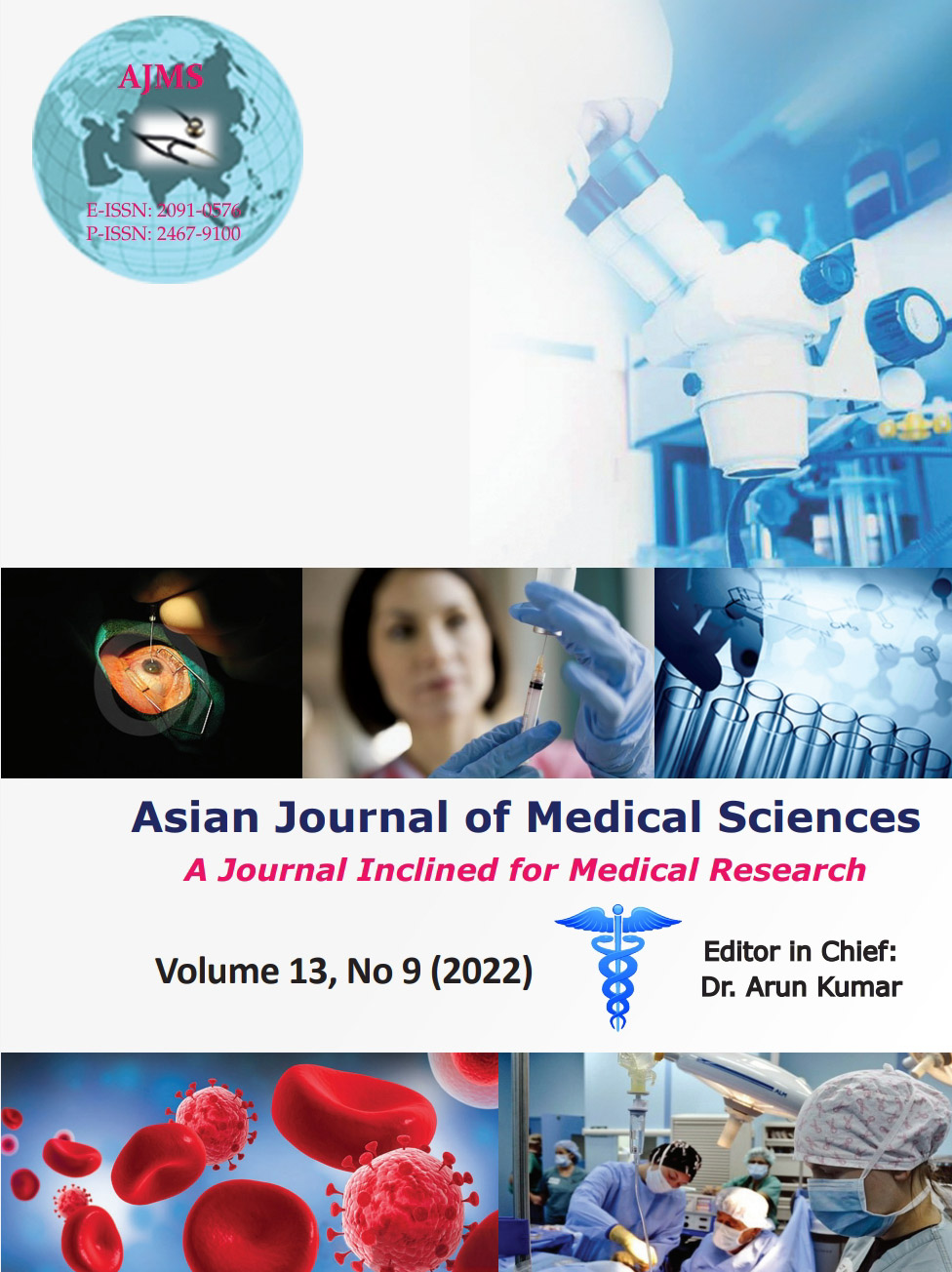An analytical study of peripheral arterial disease at Government General Hospital, Nizamabad
Keywords:
Amputation; Peripheral arterial disease; Thromboangitis obliteransAbstract
Background: Peripheral arterial disease (PAD) is linked to a decrease in functional ability as well as a higher risk of cardiovascular morbidity and mortality. Despite its widespread incidence, links to mortality, morbidity, and impaired quality of life, PAD is underdiagnosed and undertreated.
Aims and Objectives: The aim of the study was to review the available literature on this subject and analyze the mode of presentation, symptoms, signs, age incidence and results of conservative management and angioplasty, and stenting as measured by limb salvage and amputation rates.
Materials and Methods: The study was carried out on 40 patients chosen from the patients admitted in Government General Hospital, Nizamabad, with a diagnosis of peripheral vascular disease from May 2019 to April 2022.
Results: It is revealed from the study that out of 28 patients with Atherosclerosis, 10 patients were
managed conservatively, 12 underwent primary amputation, two secondary amputation, and four patients were managed with angioplasty and stenting of anterior tibial artery. Among the eight patients with Thromboangiitis Obliterans, six patients were managed conservatively, and two patients underwent primary amputations. Two patients with acute embolic disease were referred to higher center for embolectomy and remaining two patients with inconclusive etiology were managed conservatively.
Conclusion: Atherosclerosis is mainly a disease of old age but now the trend is moving towards earlier decades as well. Hence, risk factor modification and awareness remain the best method of prevention. Embolectomy should be carried out aggressively in all cases with potentially salvageable limbs.
Downloads
Downloads
Published
How to Cite
Issue
Section
License
Copyright (c) 2022 Asian Journal of Medical Sciences

This work is licensed under a Creative Commons Attribution-NonCommercial 4.0 International License.
Authors who publish with this journal agree to the following terms:
- The journal holds copyright and publishes the work under a Creative Commons CC-BY-NC license that permits use, distribution and reprduction in any medium, provided the original work is properly cited and is not used for commercial purposes. The journal should be recognised as the original publisher of this work.
- Authors are able to enter into separate, additional contractual arrangements for the non-exclusive distribution of the journal's published version of the work (e.g., post it to an institutional repository or publish it in a book), with an acknowledgement of its initial publication in this journal.
- Authors are permitted and encouraged to post their work online (e.g., in institutional repositories or on their website) prior to and during the submission process, as it can lead to productive exchanges, as well as earlier and greater citation of published work (See The Effect of Open Access).




